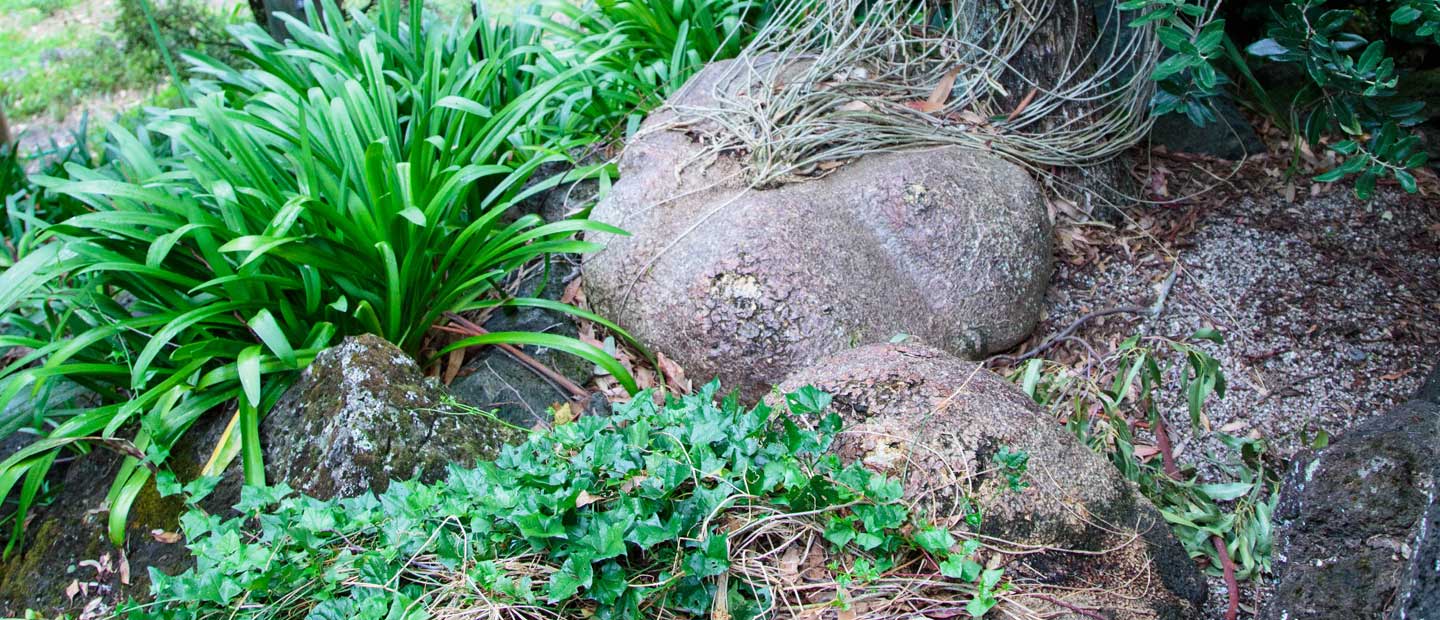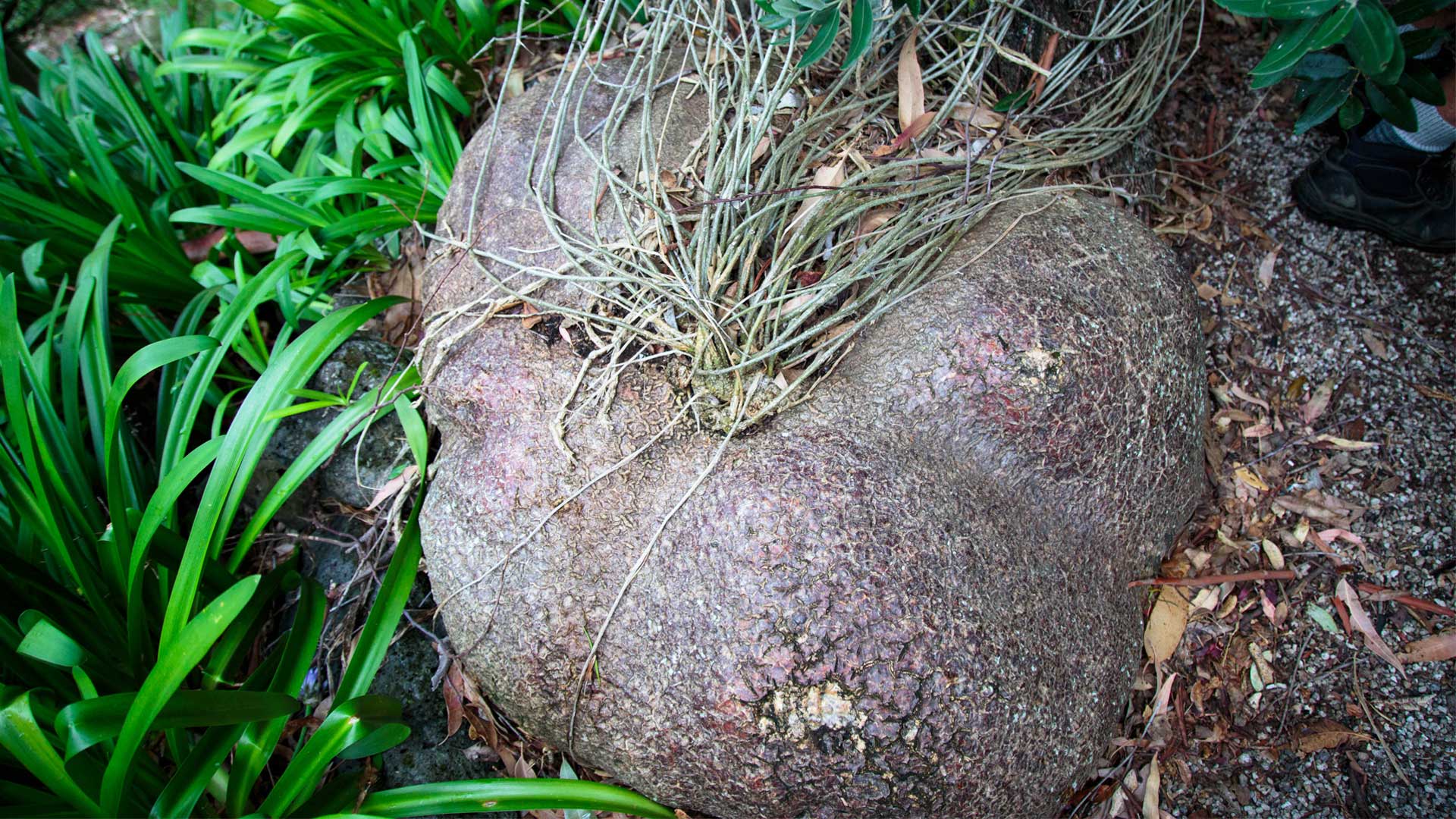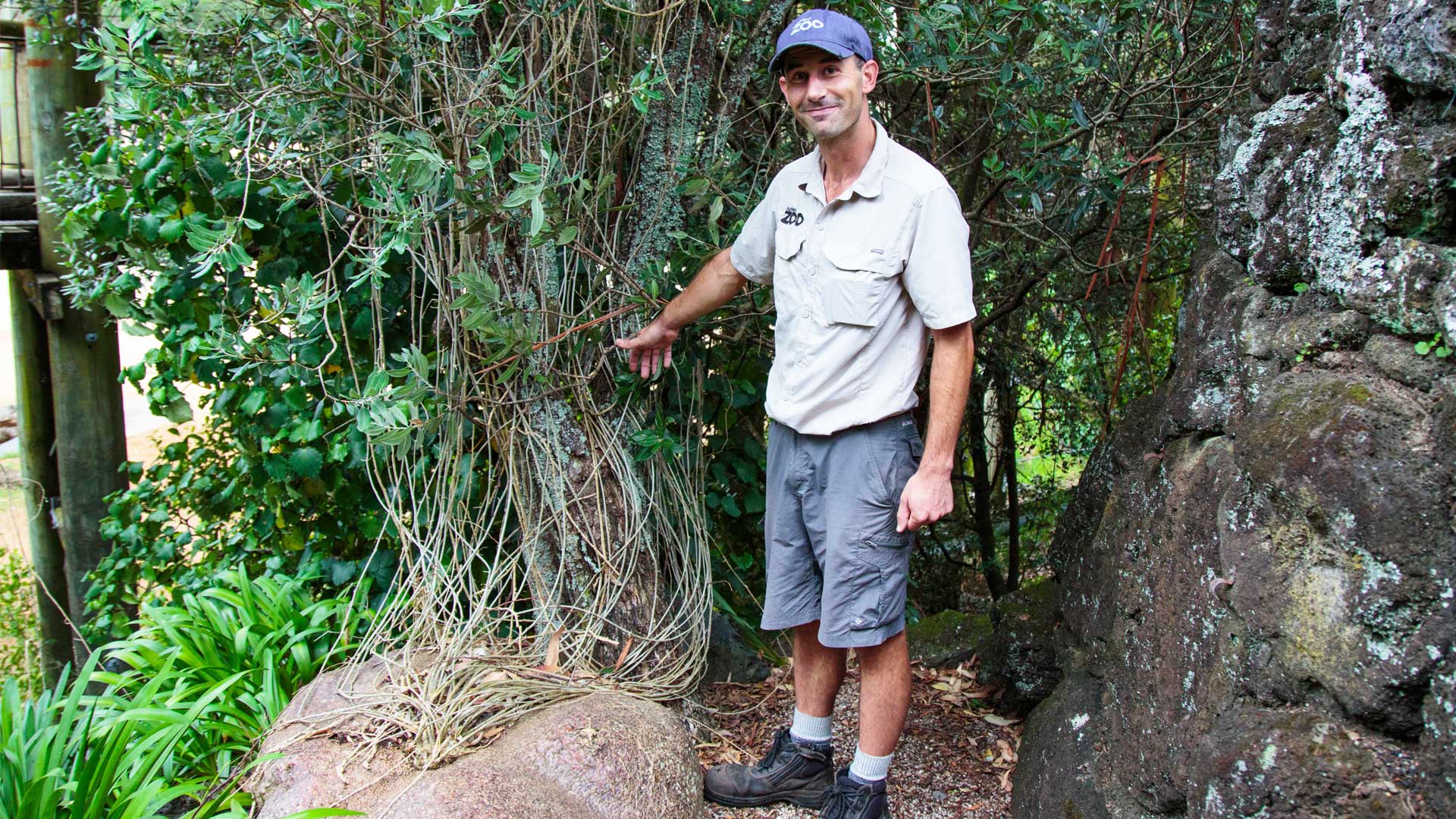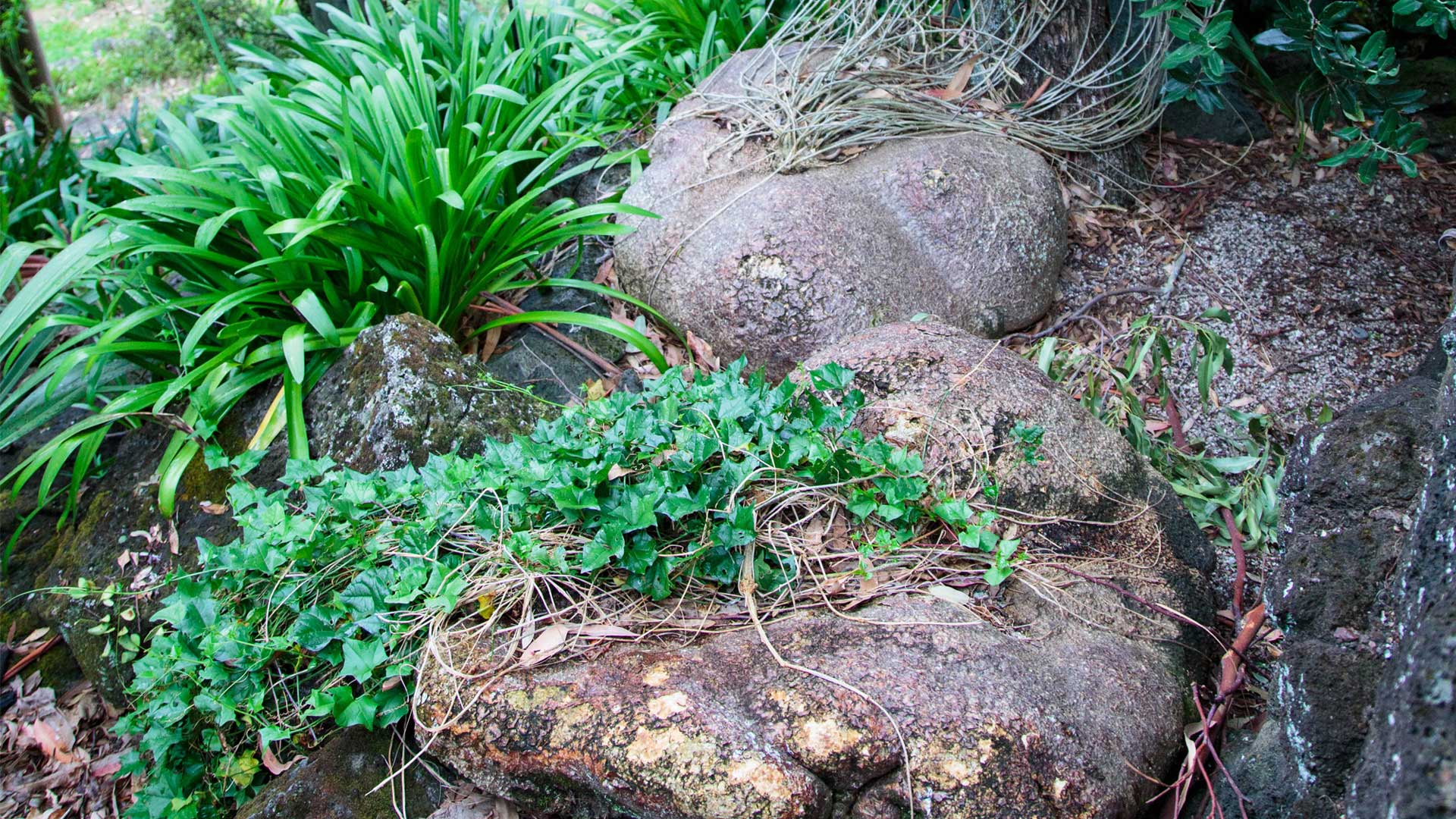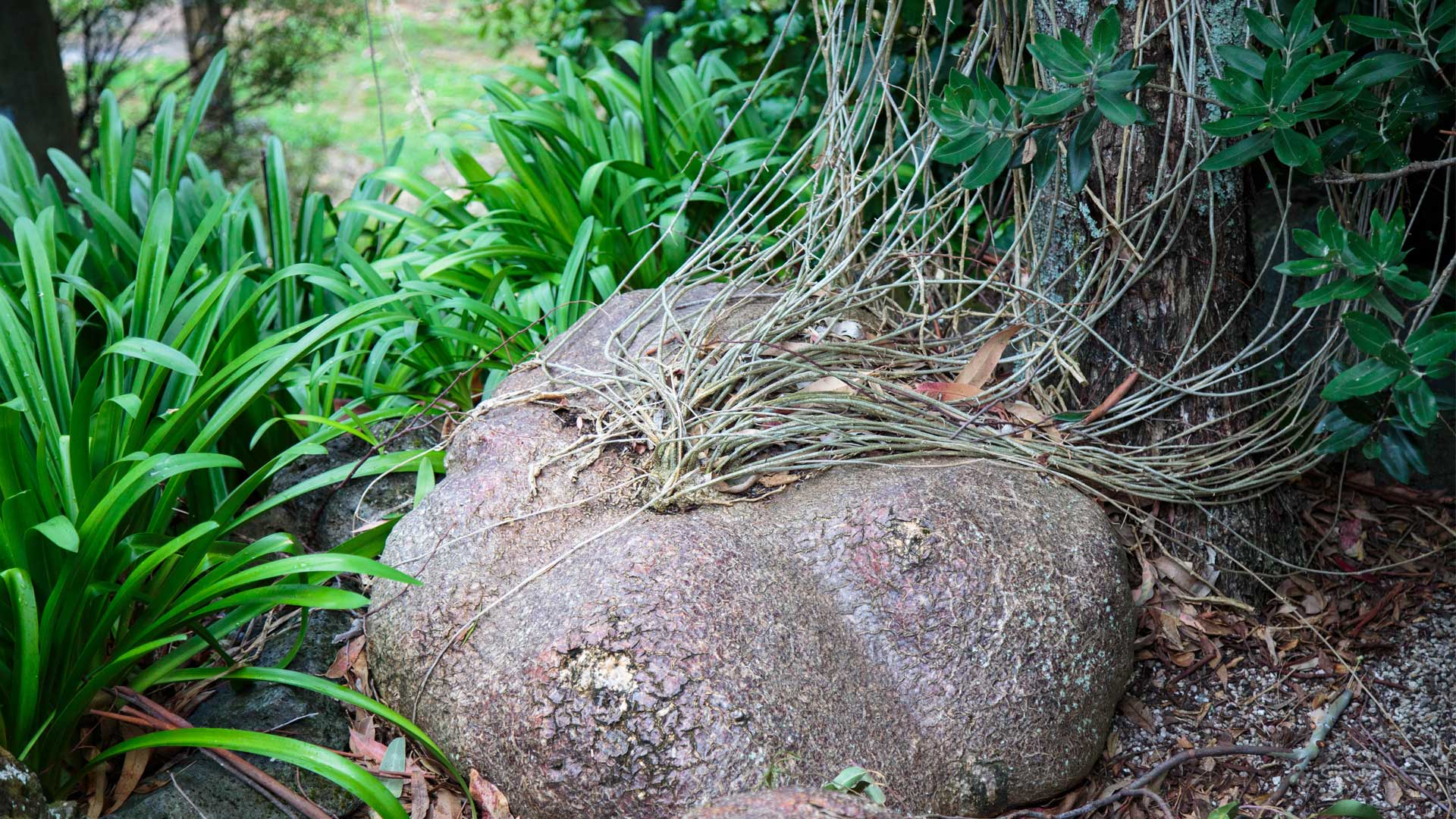This interesting species is Gerradanthus macrorrhizus, more commonly known as bigfoot or funnily enough, pregnant pancake! Native to tropical Southern Africa, it was named after famed botanical collector William Tyrer Gerrard who lived and worked in Madagascar during the mid-1800s when this plant was first described. The second part of the name macrorrhizus comes from the Greek for 'big root'.
At our zoo we have a male and female pair nestled next to each other just behind the rock wall of our entry plaza. This plant is dioecious which means that both male and female plants are needed to set seeds. A perennial climber, the vines from our female bigfoot plant have grown up and are resting their weight on a pōhutukawa tree.
Growing above ground, the base of this plant could almost be mistaken for a rock but is actually a large tuber-like growth called a caudex. Plants that form a caudex – and they come in various shapes and sizes - are grouped together in the Caudiciform family of plants, such as the more widely known ponytail palm. As these plants are naturally grown in arid climates, the caudex acts as a reservoir for water, storing it up so these plants can survive long spells of drought. For this reason, they can be very low-maintenance indoor plants when kept in a pot. Planted outside, this bigfoot is true to its name with the caudex growing to a width of 1.5 metres!


